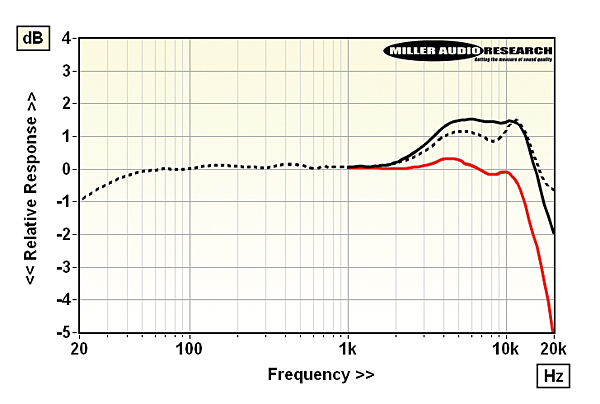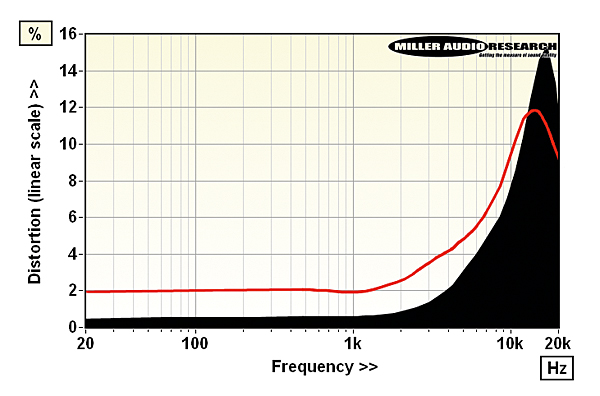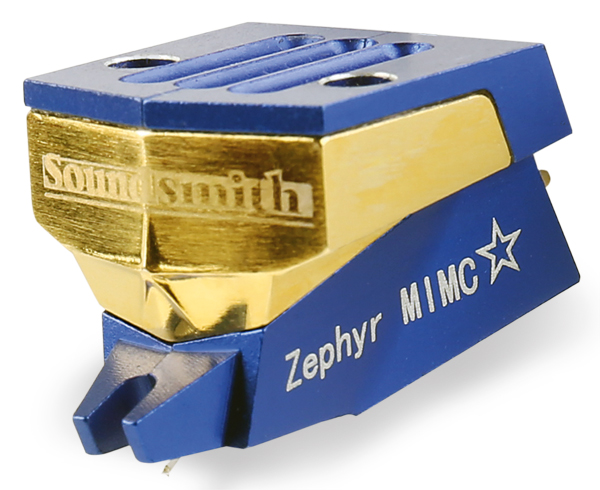Nutsfortubes
Member
- Joined
- Dec 27, 2018
- Messages
- 31
- Likes
- 27
As a Linney would say Garbage in garbage out.


| L/R Distortion (–8dB, 20Hz-20kHz) | 0.5–15% / 1.9–12% |
| L/R Frequency resp. (20Hz-20kHz) | –0.9 to +1.3dB / –0.7 to +1.4dB |

I enjoy vinyl, too. I have two separate set-ups. But I can't attribute to vinyl an "infinite" sampling frequency. I won't delve into the technical arguments of Nyquist and sampling theory, but I will point to an obvious difference: RPMs. There is a reason why higher-end recordings use 45 RPM vs. 33.3 RPM: it's effectively a higher sampling frequency. And if 45 > 33 when it comes to "sampling", then neither is "infinite".I can't explain this scientifically but I think it has something to do with a non-infinite sampling frequency.
I enjoy vinyl, too. I have two separate set-ups. But I can't attribute to vinyl an "infinite" sampling frequency. I won't delve into the technical arguments of Nyquist and sampling theory, but I will point to an obvious difference: RPMs. There is a reason why higher-end recordings use 45 RPM vs. 33.3 RPM: it's effectively a higher sampling frequency. And if 45 > 33 when it comes to "sampling", then neither is "infinite".
Just enjoy the vinyl - don't try to reach for a semi-rational explanation of why it's superior or more "natural". There's literally nothing "natural" about the process of recording, mastering, pressing and playing a vinyl record.

This whole music game is really about psychology, not really electro-acoustics. Good enough is good enough. Fret less, enjoy the ride.The idea was good enough TT. Good enough cartridge and needle, good enough phono stage, then just listen. Put on a record, choose repeat or not, sit down and just listen for 20+ minutes. It’s gonna sound how it’s gonna sound, so I focus on the music rather than worrying about fidelity or squeezing every last measure out of my system
You get 8/10 for stating the obvious that late in the thread. But only 4/10 for the trolling effect.So, the distortion and frequency response are orders of magnitude worse than digital - and this is a "good" cartridge that costs more than most vinyl lover's entire analog front end! But in selecting this or any cartridge, you get to "tune" your system's sound to your liking.
Lesson: don't expect "accuracy" from vinyl
Touché. I really must develop a personal policy about joining long threads late!You get 8/10 for stating the obvious that late in the thread. But only 4/10 for the trolling effect.
If you want to arouse record player fanatics into hypertension, you must up your game.
View attachment 196117
Thanks for posting the link to this. I also looked at some other cartridges they reviewed. The distortion graphs are more similar between cartridges than different. Twelve to fifteen percent distortion is "high" no matter how you wish to describe it. Even differing technologies showed similar distortion curves - optical and strain gauges cartridges that were tested. This raises the question - how much distortion in the results is "baked" into the test record? Another question is - what is the distribution of the harmonics? I tried to locate more information regarding their methodology without success. An interesting observation - the distortion graph is linear scale with the frequency response being log scale. The linear scale makes the distortion components look - while bad - worse from a visual perspective. If you have been focused on "ruler straight" digital test results, these must look truly "horrible".I feel urged to share these cartridge test results so that you can really see what we are working with in vinyl. The Soundsmith Zephyr MIMC Star is a US $2000 cartridge, and by most reports, a very fine performer. Here are the frequency response and distortion curves for it:

Freq. resp. curves (–8dB re. 5cm/sec) lateral (L+R, black) vs. vertical (L–R, red) vs. stereo dashed

Lateral (L+R, black infill) and vertical (L–R, red) tracing and generator distortion (2nd-4th harmonics) vs. frequency from 20Hz-20kHz (–8dB re. 5cm/sec)
Summarized:
L/R Distortion (–8dB, 20Hz-20kHz) 0.5–15% / 1.9–12% L/R Frequency resp. (20Hz-20kHz) –0.9 to +1.3dB / –0.7 to +1.4dB
So, the distortion and frequency response are orders of magnitude worse than digital - and this is a "good" cartridge that costs more than most vinyl lover's entire analog front end! But in selecting this or any cartridge, you get to "tune" your system's sound to your liking.
Lesson: don't expect "accuracy" from vinyl; expect an experience you can enjoy if you value things other than absolute transparency and accuracy to the master tape. Embrace your turntable for what it is - a very flawed but nonetheless often compelling way to enjoy an archaic medium. Although improvements are possible, no amount of money you throw at it will fundamentally change that reality.

Soundsmith Zephyr MIMC Star Cartridge
Arguably best known for its high-end strain-gauge pick-ups, Soundsmith also offers a series of high- and low-output moving-iron/fixed-coil cartridges. Is the Zephyr a 'star'? The so-called 'vinyl revival' has not only fermented an uptick in sales of both turntables and LP records but it's also...www.hifinews.com
Seems to me that shaking a stick with a rock on one end at 10,000 times a second is bound to introduce some distortion. Fortunately, our hearing is such that we are less sensitive to distortion at high frequencies.Thanks for posting the link to this. I also looked at some other cartridges they reviewed. The distortion graphs are more similar between cartridges than different. Twelve to fifteen percent distortion is "high" no matter how you wish to describe it. Even differing technologies showed similar distortion curves - optical and strain gauges cartridges that were tested. This raises the question - how much distortion in the results is "baked" into the test record? Another question is - what is the distribution of the harmonics? I tried to locate more information regarding their methodology without success. An interesting observation - the distortion graph is linear scale with the frequency response being log scale. The linear scale makes the distortion components look - while bad - worse from a visual perspective. If you have been focused on "ruler straight" digital test results, these must look truly "horrible".
Pretty amazing vinyl can sound as good as it does.
…and which is immediately countered with statements like, “vinyl is the only intelligent way to collect music”. So, no. Unless you call that balance.Indeed. The implication that vinyl discussions on ASR, this one in particular, don't have any "balance" is belied by the fact that virtually everyone has acknowledged the liabilities of vinyl. In literally every thread.
That’s the power of confirmation bias for you. Not amazing at all.Pretty amazing vinyl can sound as good as it does.
Good lord is that dude the epitome of hipster.33 pages on this topic and growing. This is not that hard. Vinyl is fun because of the physical format and the inherent variability between systems and pressings. It is an endless delight for tweakers and those with OCD. Digital may be more accurate and less variable, but those things may make it less fun and engaging for some people. Vinyl systems are more complicated because there are so many variables that the owner can influence, but it also makes it easy to overspend for marginal (or imagined) performance increase.
I really like the advice that Andrew Robinson said in his YouTube channel: "The best turntable on the market today is the one you can afford. ...The only person who has to be impressed with your setup is you."
I think you will find in measurements of turntables that the margin of difference between an AT LP120X and a unit 10x as much is probably not as great as the price difference.
Very true. I ran the numbers in db and at 12% we are at -18.4 db. This would be audible if we can hear the high frequency components - fundamental frequency looks to be around 12KHZ at 12%. Second harmonic would be 24KHZ, so maybe we don't hear it even during loud playback. Looking at the graph this way may explain why vinyl sounds pretty good,Seems to me that shaking a stick with a rock on one end at 10,000 times a second is bound to introduce some distortion. Fortunately, our hearing is such that we are less sensitive to distortion at high frequencies.
I don't always agree with Andrew, but I agree with this bit of insight. As my grandma taught me ages ago, "you can learn something from anybody".Good lord is that dude the epitome of hipster.
I don't worry too much about high distortion at high frequencies.Thanks for posting the link to this. I also looked at some other cartridges they reviewed. The distortion graphs are more similar between cartridges than different. Twelve to fifteen percent distortion is "high" no matter how you wish to describe it. Even differing technologies showed similar distortion curves - optical and strain gauges cartridges that were tested. This raises the question - how much distortion in the results is "baked" into the test record? Another question is - what is the distribution of the harmonics? I tried to locate more information regarding their methodology without success. An interesting observation - the distortion graph is linear scale with the frequency response being log scale. The linear scale makes the distortion components look - while bad - worse from a visual perspective. If you have been focused on "ruler straight" digital test results, these must look truly "horrible".
Pretty amazing vinyl can sound as good as it does.
Sure, but is the ukelele really necessary?I don't always agree with Andrew, but I agree with this bit of insight. As my grandma taught me ages ago, "you can learn something from anybody".
